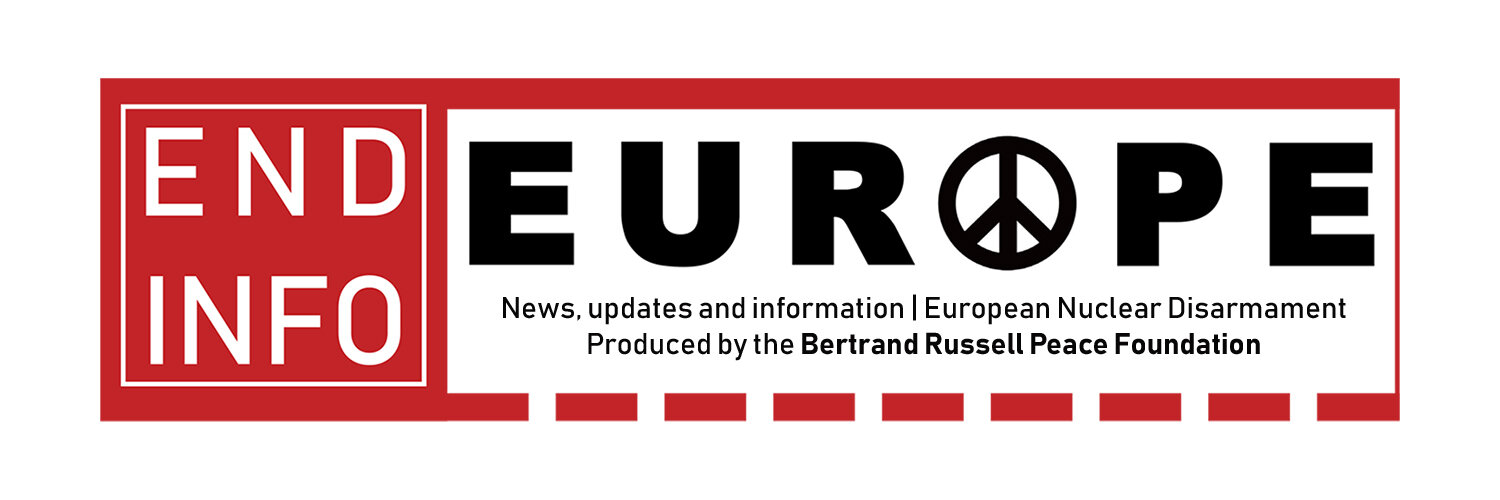Lakenheath: evidence and dangers mount
From ENDInfo 39
Evidence is mounting that the United States plans to station nuclear bombs in the UK once more. Documents analysed by the Federation of American Scientists (FAS), a US-based organisation, note plans for the construction of a “surety dormitory” at the Lakenheath airbase. According to Hans Kristensen and Matt Korda of the FAS:
“Surety” is a term commonly used within the Department of Defense and Department of Energy to refer to the capability to keep nuclear weapons safe, secure, and under positive control.
This latest news follows information obtained by Kristensen last year, which showed the inclusion of the UK on a list of US nuclear storage sites in Europe. This list was connected to funding proposals to upgrade and improve nuclear storage facilities.
Perhaps the clearest evidence that the US intends to return nuclear bombs to Lakenheath is the stationing of two squadrons of the new F35A aircraft at the base. It has been argued that these aircraft were designed specifically to carry the a new range of nuclear bombs, the B61-12s. Why else would so many nuclear-capable aircraft be stationed at Lakenheath if not to carry nuclear bombs?
The British media has finally taken note of these developments, with national newspapers, radio and television stations reporting on developments. Not every media outlet voices opposition to these developments but a recent survey conducted by the YouGov polling agency recorded that of those questioned, a mere 7% ‘strongly support’ the plans. 16% expressed some support, whilst 20% oppose and 39% ‘strongly oppose’ the plans. This is a clear majority of those surveyed - a representative sample of the British population - opposed to returning US nuclear bombs to Lakenheath. This level of opposition should encourage further and more vigorous protest action.
What do the politicians have to say about these developments? Very little, so far. This should be surprising as the plans to date have been developed without consultation, deliberation, opportunities for dissent or opposition within Britain’s ‘democratic’ bodies. Why is this? Why, when asked, have British and US representatives uttered the same claim that they can “neither confirm nor deny”?
Part of the explanation is that what the nuclear-armed states call their ‘posture’ relies heavily on ‘keeping the enemy guessing’. Such a ‘posture’ could make sense in a game of cards but it seems particularly foolish when the ‘wrong guess’ could lead to the extermination of life on the planet.
Another part of the explanation is the existence of the 1958 UK–US Mutual Defence Agreement (MDA). This agreement regulates the nuclear relationship between the UK and the US. As John Ainslie has shown (see Spokesman 153) the UK is entirely dependent upon the US for the maintenence and upgrading of nuclear weapons systems. As such, in any agreement like the MDA, it is clear who has the upper hand.
The MDA regulates and controls a whole number of factors associated with nuclear weapons technology. One of these is ‘secrecy’. Speaking of which, the MDA has undergone a number of renewal processes, the latest of which is to conclude by the end of 2024. The process by which the renewal takes place and the lack of accountability or debate in the British parliament are deeply concerning. As is the 2004 legal opinion obtained by BASIC, which argued that renewal of the treaty contravenes Article IV of the Non-Proliferation Treaty, which commits signatories to pursuing nuclear disarmament. The MDA does the exact opposite of this: it encourages the maintenence of nuclear weapons systems.
The MDA is just one of a whole series of agreements and treaties that allow the for a close nuclear relationship between the US and UK. For how much longer will the secrets endure?
Quite predictably and as anti-nuclear campaigners have warned, Russia has interpreted the re-deployment of US nuclear bombs at Lakenheath as a threat. A spokesperson for the Russian Foreign Ministry, Maria Zakharova, told reporters that they view the deployment as an “escalation”. In ‘nuclear strategy’ an escalation on one side is usually met with escalation by the other side. What will Russia do? We hope that they will show restraint given the already sharpened nuclear tensions.
As we wrote in END Info 32:
Even without the massively increased nuclear tensions that have been developing over the past few years, and which have become even more acute over the past months, our opposition would be sharp.
We know that even in the most stable of times, increasing the US’s nuclear bootprint would create instability. We are not living through particularly stable times.
We know that regardless of other circumstances, a nuclear storage site and an airbase for nuclear capable bombers becomes a target for a nuclear strike. We need to make everyone aware of this risk and link it to all of the other very good reasons for opposing nuclear weapons.
We know that every new nuclear development brings with it new risks, new dangers and new threats in local, regional, national and international contexts.
The Campaign for Nuclear Disarmament has a day of action on 23rd September. See www.cnduk.org for more information.

